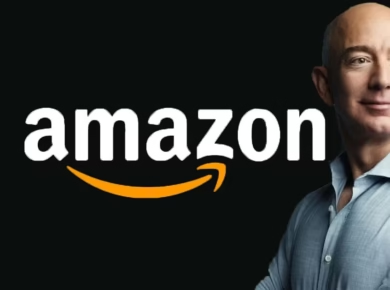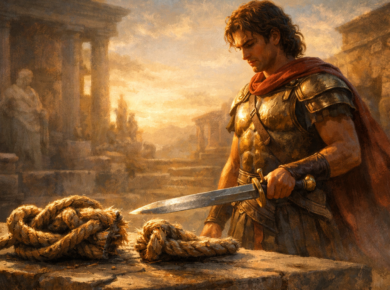Electric Vehicles vs. Hydrogen Cars: Who Will Win the Race?
Short answer: battery electric vehicles (BEVs) lead for most drivers today. Hydrogen fuel-cell vehicles (FCEVs) still have a role in heavy trucks, buses, and some niches. This page explains why in clear, simple terms. It highlights fresh moves by the biggest players and links to solid sources you can explore.
What each tech is, in plain words
Battery EVs
- Run on a big battery. You charge it.
- Energy moves straight to the motor. Few moving parts.
- Fast growth. Many models. Many price points.
Strong now Big model choice Home + public charging
Hydrogen fuel-cell cars
- Store hydrogen gas in tanks.
- Fuel cell makes electricity on board.
- Refuel in minutes. Range is good.
Fast refuel Low tailpipe emissions Needs H2 stations
The scoreboard in 2025
Most new zero-emission cars are BEVs. Costs have fallen. Range is up. Charging is spreading fast. Many countries push for more chargers, and a single plug standard in North America is taking hold. Hydrogen cars remain rare. The main action for hydrogen is in heavy trucks and fleet work where quick refueling and long duty cycles matter.
Latest company moves you should know
Tesla & the North American plug shift
- North America is moving to the SAE J3400 version of Tesla’s plug (also called NACS). This opens more Superchargers to non-Tesla cars. See the standard notes and industry updates: SAE release, SAE J3400/2, and a consumer view from Consumer Reports.
- Tesla keeps adding V4 Superchargers and opening access region-by-region. See Tesla’s own pages on NACS and Supercharging.
Battery breakthroughs (CATL, BYD, others)
- CATL Shenxing fast-charge LFP keeps scaling. The company also announced a next-gen “Naxtra” brand and a dual-power safety architecture. Read the details: Shenxing Plus, Naxtra & 2nd-gen Shenxing, and reporting from Reuters.
- BYD continues to push cost and scale. Reports say BYD is testing solid-state packs on road in China; mainstream experts still flag mass market solid-state as “not yet.” See zecar and analysis caution via CarNewsChina.
Hydrogen passenger cars (Toyota, BMW, Hyundai)
- Toyota Mirai continues in limited markets with a 2025 model year update. See Toyota’s brief press note and a buyer-oriented review. Toyota also laid out a wider hydrogen plan at the 2025 Hydrogen & Fuel Cell Seminar: roadmap.
- BMW finished a global iX5 Hydrogen pilot and now targets small-series hydrogen models around 2028. See BMW’s program page.
- Hyundai keeps fuel-cell focus on heavy-duty rather than new fuel-cell cars in 2025.
Hydrogen heavy trucks (Hyundai, Kenworth/Toyota, Nikola)
- Hyundai XCIENT fuel-cell Class 8 truck got a new version at ACT Expo 2025; the company is growing U.S. pilots after deployments in Europe. See Hyundai’s press info: ACT Expo 2025 and earlier deployments milestone.
- Kenworth/Toyota continue FCEV work, but timelines shifted. Trade press reported delays to T680 FCEV serial production; see Transport Topics.
- Nikola faced severe headwinds and entered bankruptcy proceedings in early 2025; assets and IP are being sold while fleets grapple with support and fuel costs. See coverage from TFLtruck, Clean Trucking, and Transport Topics.
Policy that shifts the map
- EU AFIR locks in big build-outs. By 2030: hydrogen stations every 200 km on core TEN-T and one in each urban node. Fast EV chargers dense along highways. See the EU Council press release and summaries: EU Council, ICCT brief, Volvo Trucks explainer.
- U.S. hydrogen hubs began Phase-1 funding in 2024, but 2025 brought political shifts and uncertainty for several hubs and for hydrogen tax credits. See background and updates via DOE hub page, Clean Energy Group, and reporting from Reuters and National Law Review.
Why BEVs lead for most people
Three things matter most: total cost, places to refuel, and ease of use.
- Cost per km. Electricity is cheap where people live. Many can charge at home. Off-peak rates help. Hydrogen fuel is still pricey in many places.
- Infrastructure pace. Chargers are growing fast. Policy in the EU and a single plug in North America help a lot. Apps are better. Payment is simpler than before.
- Tech curve. Batteries keep improving. LFP is robust and cheap. Fast charging gets faster. New chemistries add options for cost or cold weather.
Result: more BEV models, more used stock, and better resale. That flywheel keeps turning.
Where hydrogen can still win
Hydrogen shines when you need quick refuel, long hours, and predictable routes. Think heavy trucks, ports, steel plants, or backup power. Depot refueling can work with captive fleets. If green or low-carbon hydrogen gets cheap and supply is steady, the case improves.
For personal cars, the case is tougher. Few stations, higher fuel cost, and a smaller choice of models hold it back. The tech is sound. The network is the hurdle.
Head-to-head: practical questions
“How long to refuel?”
Hydrogen: a few minutes. BEV: a coffee stop if you fast-charge; overnight at home is easiest.
“What about road trips?”
BEV: plan with apps; public fast chargers along most highways in many countries. Hydrogen: only a few corridors today.
“How green is it?”
BEV: depends on your grid and when you charge. Hydrogen: depends on how the H2 is made and transported.
“Batteries wear out?”
Modern packs last many years. Thermal management and chemistries improved. Warranties help.
“Hydrogen is dangerous?”
It needs care, yes. Cars meet strict standards. Stations add cost due to safety and compression.
“Resale?”
BEV resale is improving as supply and demand balance. FCEV resale is hindered by station scarcity.
Company cheat-sheet (quick links)
EV leaders
Hydrogen — cars
Policy cheat-sheet
- EU AFIR: fast EV charging density targets and H2 every 200 km by 2030 on core corridors. Links: EU Council, ICCT.
- U.S. hydrogen hubs: Phase-1 launched in 2024; 2025 brought funding uncertainty and timeline risk. Read: DOE overview, National Law Review, Reuters analysis.
So… who “wins”?
For the next five years, BEVs win for most drivers. The reasons are simple: lower running cost, many places to charge, and rapid battery gains. Hydrogen keeps a real, focused lane: heavy trucks, some buses, and operations that value short refuel times and long shifts.
Both may grow. It is not a zero-sum game. But if you want a new zero-emission car today, the safe pick is a BEV. If you run long-haul trucks or port drayage, hydrogen pilots deserve a look, especially where subsidies and fuel supply line up.
FAQs in one breath
- Are BEVs getting easier to charge? Yes. EU rules force growth, and North America is unifying around J3400, opening more Superchargers to all.
- Are solid-state batteries here? Early pilots and small runs may appear late 2025–2028. Mass scale will take longer. LFP fast-charge cells are the star today.
- Is hydrogen “dead” for cars? No. But the network gap is big. A few regions will keep it alive for fleets and early adopters.
- What about total climate impact? Both can be very clean. It depends on how power or hydrogen is made and moved.
Want to dig deeper?
Helpful starting points:
- North American plug standard and access: SAE J3400, Consumer Reports explainer.
- Battery tech updates (LFP, sodium-ion): CATL Shenxing Plus, Naxtra and 2nd-gen Shenxing, Reuters.
- EU infrastructure rules: EU Council on AFIR, ICCT policy update.
- Hydrogen trucks and pilots: Hyundai XCIENT 2025, Kenworth/Toyota update, Nikola auctions.









Comments are closed.